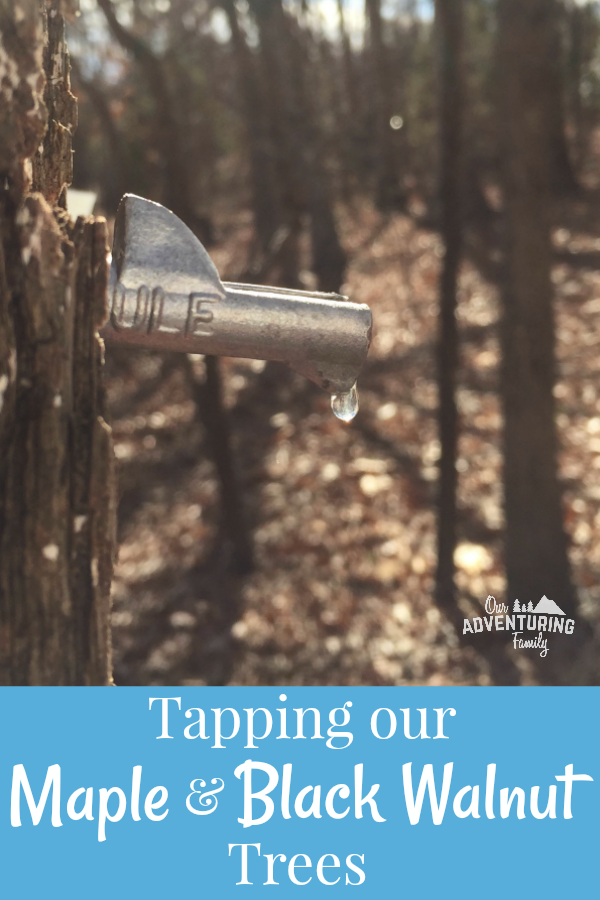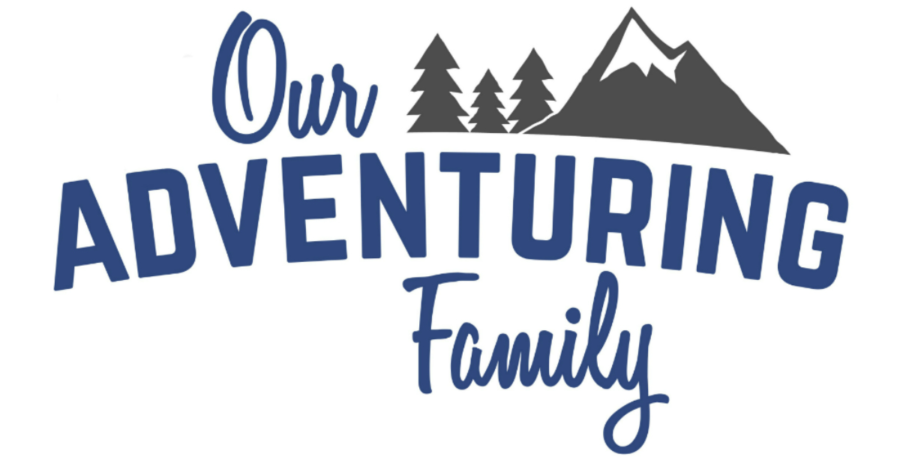This post may contain affiliate links. As an Amazon Associate I earn from qualifying purchases, but there is no additional cost for you. Please see my Disclosure page for more information.
There’s all sorts of adventures. Some push us physically, some push us mentally. We learn things about ourselves and the world around us. One adventure we’ve pursued the last four winters is tapping our trees to make syrup. It’s not an adrenaline rush, though we do get our exercise as we hike around our property and it is oh so gratifying to eat waffles smothered in syrup we made. Learning to use the resources around us while respecting nature is a lesson we want our children to learn, and it doesn’t have to be learned just at national or state parks.
~~~~~~~~~~~~~~~
When I was 6, we lived in New York state. We were only there for the school year while my dad did some training, but the experience has stuck with me all these years. We rented the coolest old Victorian house (it had a dumbwaiter!) just outside a small town on the Susquehanna river. That winter we tapped the maple trees on the property and boiled the sap over the boiler in the cellar of the house.
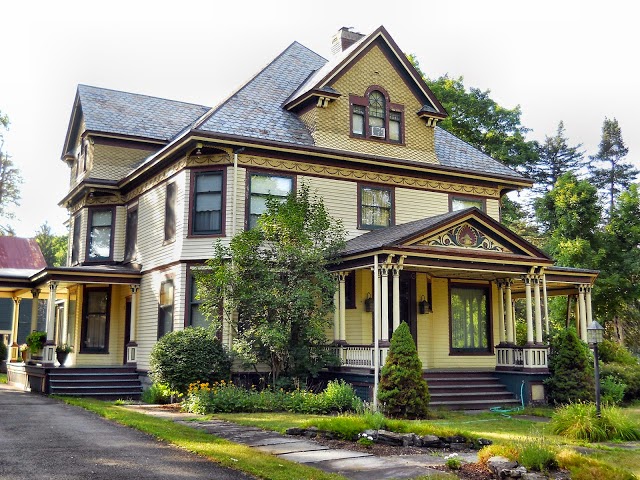
It was such a great experience for us, and even though I was young, I still remember the process and how cool it was to make syrup from trees on the property. And ok, at the time I didn’t actually care for the maple syrup, even on pancakes, but my palate has matured. These days I enjoy maple syrup and maple sugar candy and I regularly use maple sugar when I bake.
Fast forward from that first maple syrup experience about 30 years, and we’re living on a wooded lot in central Virginia, at least a few of which I was pretty sure were maples. After a bit of research, we identified four maples just as the last of the leaves were falling. A few months later, we tapped those four trees. My dad had sent me the spiles and collection bags he’d used a few years after that first experience, in a different location, so we were able to try out the process without spending any money.
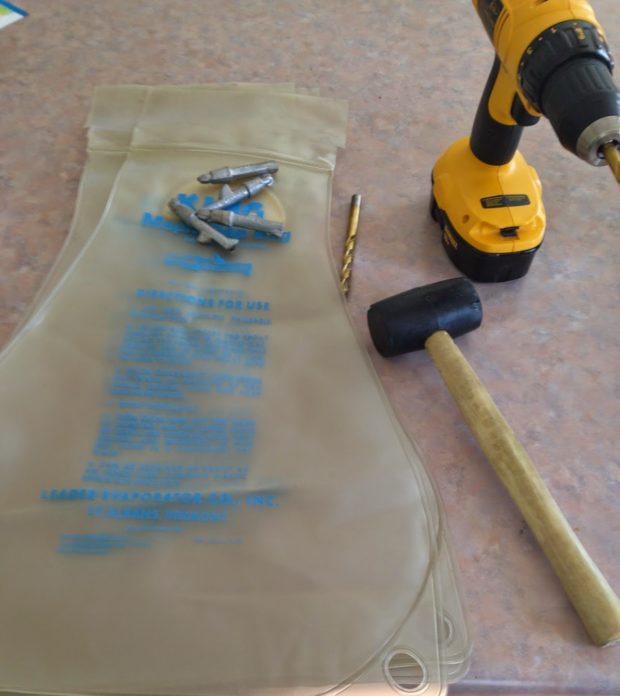
While researching how to tap maple trees, I detoured down some rabbit trails, as one does. I found that black walnuts, as well as other trees, produce sap that can be boiled into syrup. Well, all trees produce sap, but the best trees to tap are the ones with a high sugar content, like sugar maples and black walnuts. We’d found black walnuts (the nuts) on the ground, so I was pretty sure we had at least a couple black walnut trees on our property.
Consequently, the autumn after our second year of tapping we walked the property again and identified three black walnuts as well as two more maples we’d missed the first time we’d looked.
The additional trees meant we no longer had enough bags or spiles to collect sap, so last year (our third year tapping) we purchased a dozen vintage buckets and lids and spiles to hold those buckets. Spoiler: apparently you shouldn’t use galvanized metal any more? I found that out this year, so I was going to buy plastic liners for next year.
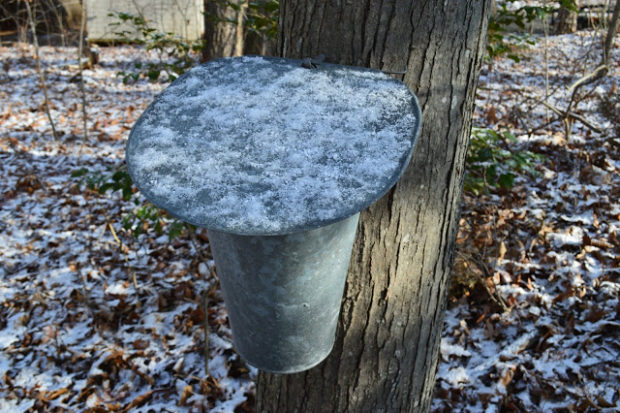
That third winter was very mild, so the maple sap never got running very well, but the black walnuts did pretty well. Well enough to encourage us to tap them again, anyway.
This year we’ve had some good cold snaps and have collected more sap than in the last three years combined. Supposedly black walnuts do not produce as much sap as maples, but that has not been the case for us. Our three walnuts have out-produced our six maples last year and this year. Unfortunately, there’s not a lot of research on black walnuts, but I can’t help but wonder if it has something to do with our climate. Without more data it’s hard to be sure what is relevant and what is coincidental.
Buckets and bags vs tubes
I’ll admit to being a snob and thinking the tubes looked hideous. And they do. Buckets look so much cooler. But, if the tubes are done correctly, you can get a bit of a vacuum going, which will keep bacteria out of the lines, which will prolong your collection window, and you can collect more sap than with old fashioned spiles. You can even add a small vacuum pump to create a stronger vacuum.
I don’t have a picture of the tubing running through the trees, but if you go here, you can see some. This site is also a good source for more info on tapping maple trees.
Those arguments were enough to convince me it’s worth it to have ugly blue tubing running around our property next year. Now if we can just keep the squirrels from nibbling on the tubing and the deer from running through the lines and ripping them out, we’ll be good to go.
Sunshine’s been in charge of collecting the sap and hauling it to the house, and she’s totally on board with the tube idea and only having to empty the sap from one container.
Boiling inside vs outside vs wood stove
The first three years, we only collected a gallon or two of sap at a time, so we boiled it down in a pot on the stove in our kitchen. This year, when we nearly filled a 5 gallon bucket our first day collecting sap, I knew that having that much condensation in the kitchen would be a very bad idea.
The fire pit we built a couple years ago just happens to be the right size for a roasting pan and meant we didn’t have to build a temporary fire pit out of cinder block, as many do.
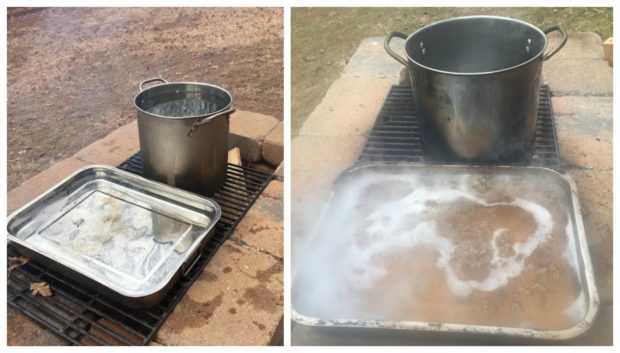
The fire pit proved much more efficient than the stove, though a fair amount of ash ended up in the syrup. Good filters took care of that problem though, with very satisfactory results (more on that in a minute.)
A wood stove or barrel stove with openings just big enough for the pans would burn more efficiently and result in a cleaner syrup. However, we’re planning on moving in a couple years and I can’t see a way to justify the expense of a stove when we have a fire pit that works fine and filters to clean the syrup.
Maple syrup
If you’re attempting to make syrup, don’t walk away when it’s close! After boiling the sap down outside, I brought it inside to finish in a smaller pot over the stove, where I could have more control over it. Even then, I scorched a batch when I got distracted for a couple minutes, but by then it was too late.
Maple syrup can be cooked down into maple candy or maple sugar, but you really have to keep an eye on it. On one occasion I was trying to make maple candy, but I must have cooked it a smidge too long. One second it was fine, the next it had seized up and formed maple sugar chunks. It wasn’t pretty, but it tasted good.
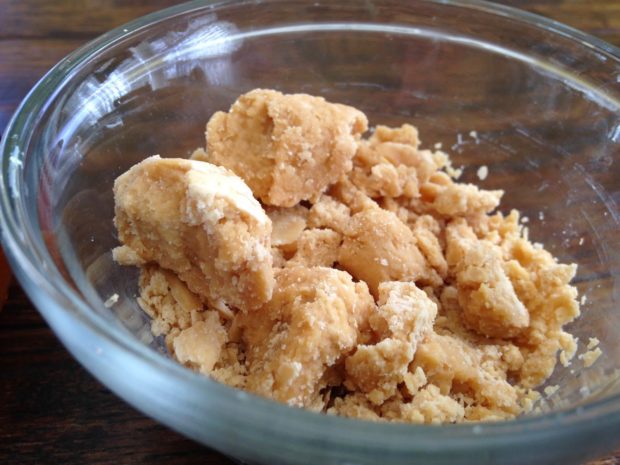
Black walnut syrup
Last year was our first time doing black walnut syrup, and I kept it separate from the maple syrup we made. This year I measured how much sap we got from each variety, then dumped it all together. The result was a dark syrup with a robust, nutty flavor that is quite nice. This is the first year we’ve produced more than a half cup or so of syrup, so we’re pretty excited.
The one drawback to making black walnut syrup is that the sap contains pectin. This becomes evident when you filter the syrup to remove any impurities and your filters clog up with gunk. I didn’t know what to make of it last year, but did some research after the season and realized what the problem had been.
This year I upgraded my filters and it made the process a lot smoother and easier. In the past, I’ve used coffee filters, but they’re not big enough to cover the sieve, so I would layer several in an attempt to cover as much of the sieve as possible. Inevitably they’d shift and allow impurities through. I placed these prefilters in this felt Orlon filter, and they stayed in place and took care of the ash and other impurities that were present. Using multiple prefilters allowed me to remove the innermost filter when it became too clogged, while still leaving other filters doing their job.
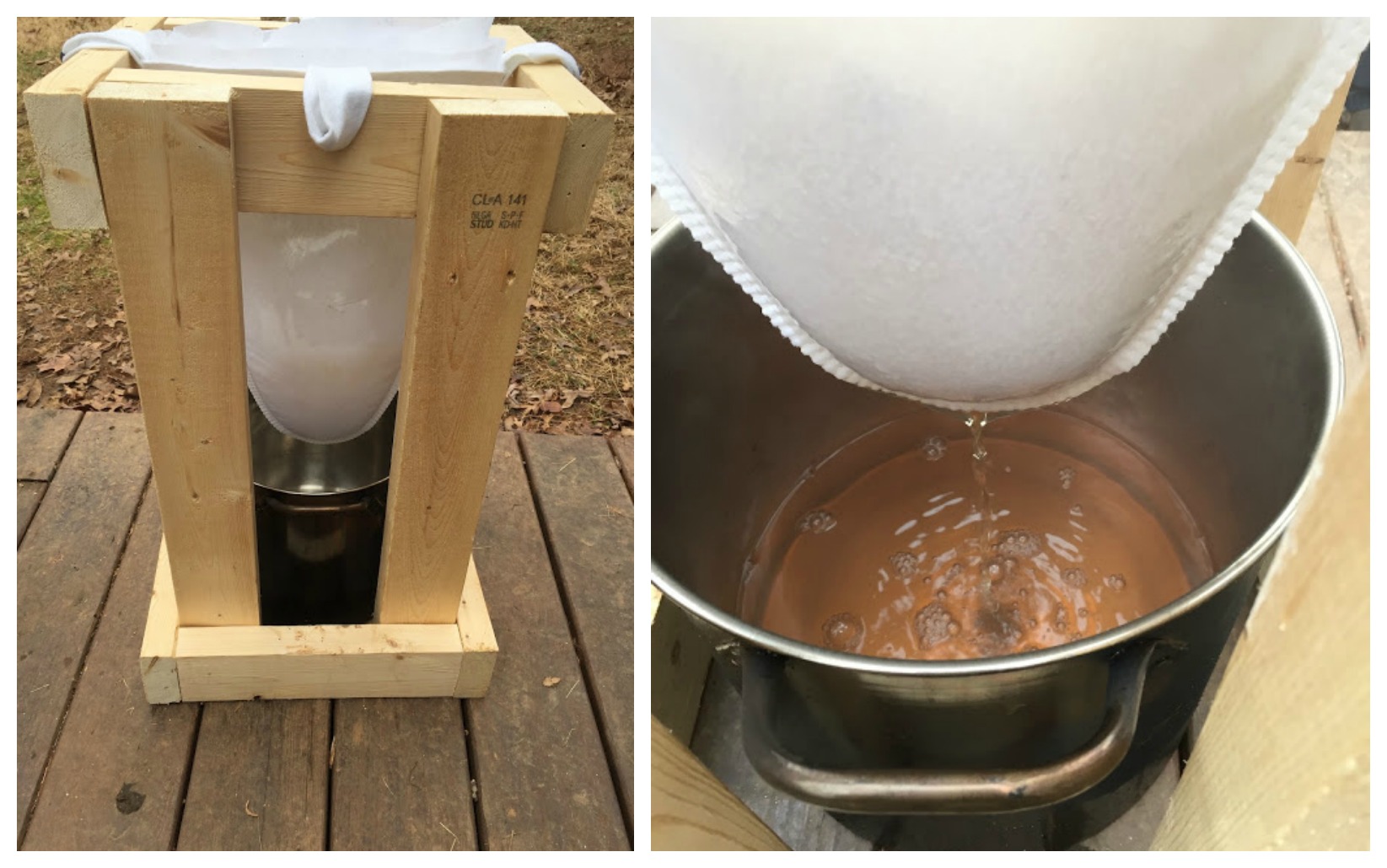
Hickory syrup
Another mom in our homeschool group asked me if I’d ever heard of hickory syrup. I hadn’t, so naturally I had to do some googling to see what I could find out. After a bit of research, I found that hickory syrup is made from boiling the bark of the hickory tree and then adding sugar, rather than boiling the sap. Possibly the bark is roasted first? I’m not sure how one would roast bark, so more research is needed before we give this a try. We do have some hickory trees, and I’d already planned on gathering the nuts this summer/fall, so now we’ll gather bark as well. More experimenting to come!
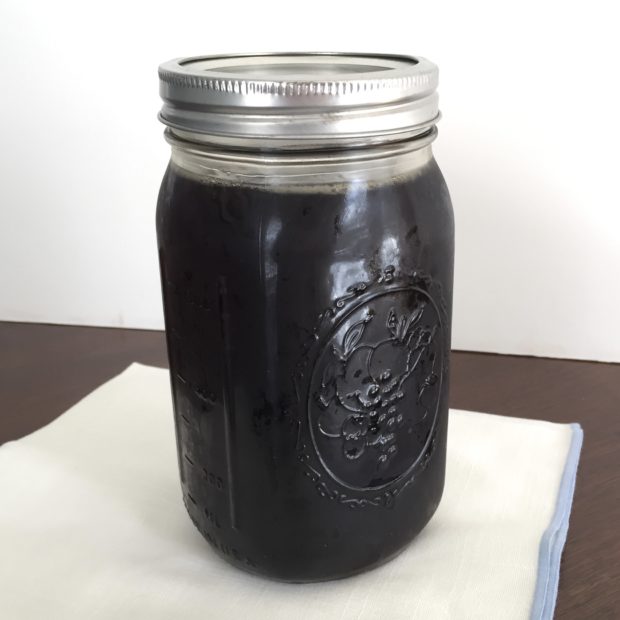
What kind of adventures does your family enjoy that are closer to home and just a little out of the box?
